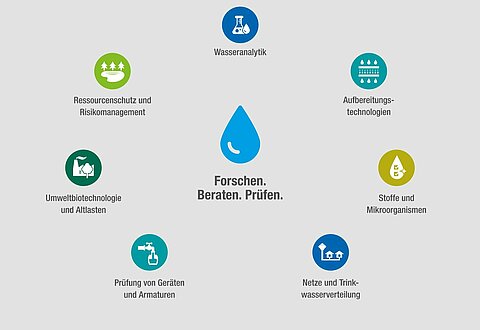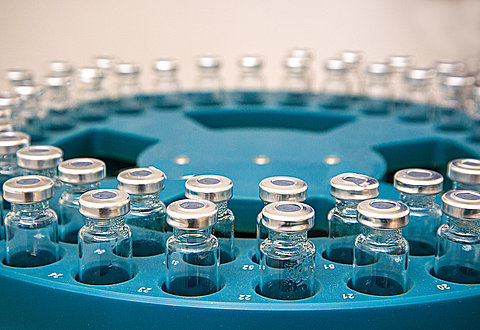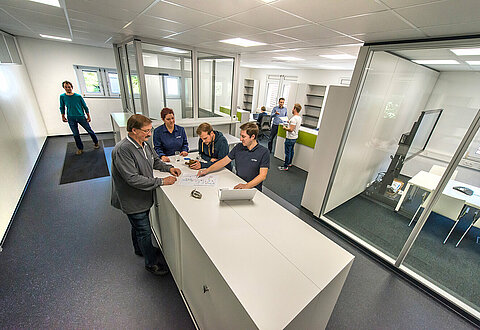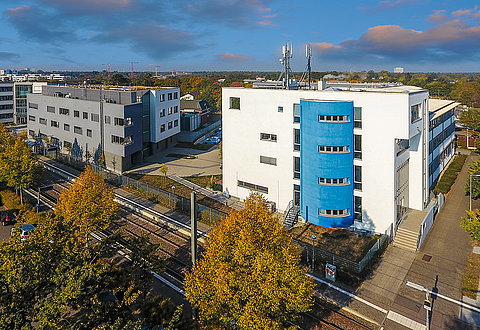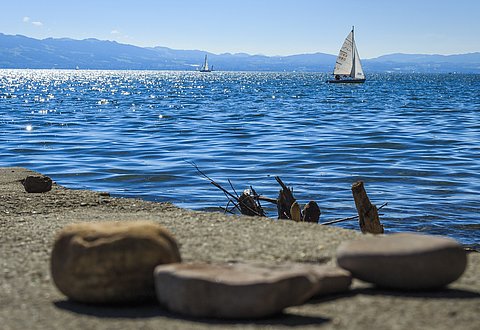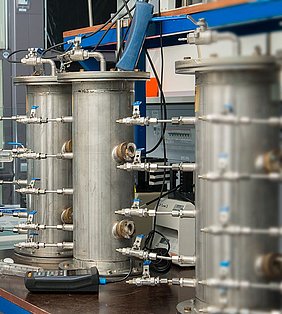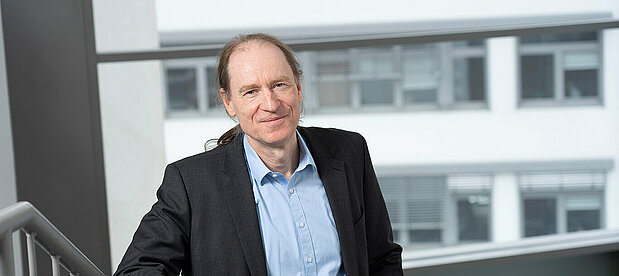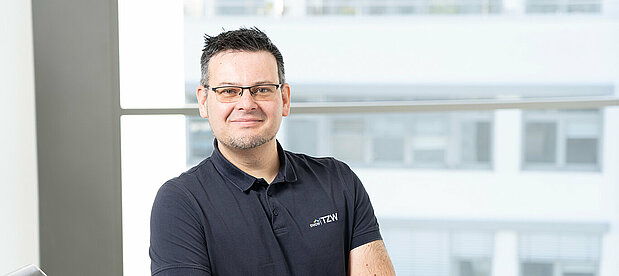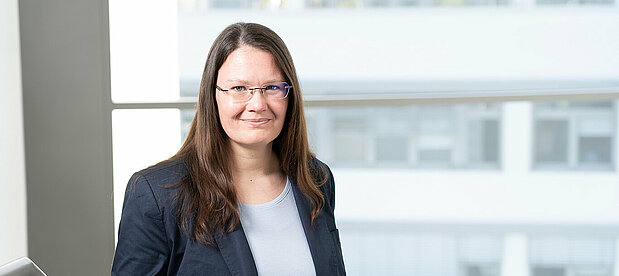In the joint project TrinkWave, new multi-barrier treatment processes for recycling water were developed to support drinking water supply. A project focus included the inactivation of hygienically relevant viruses, bacteria and antibiotic resistances, and the reduction of harmful micropollutants and transformation products.
The reuse of treated wastewater is becoming increasingly important worldwide, especially in arid and semi-arid regions. However, the reuse of waste water may also be economically and ecologically useful in areas such as Germany with a moderate climate. To ensure an acceptable drinking water quality, the inactivation of pathogens (especially viruses) and antibiotic resistances, as well as a reduction of anthropogenic micropollutants has to be guaranteed.
In the BMBF-funded research project TrinkWave, innovative multi-barrier concepts were developed for reusing waste water by means of sequential groundwater recharge (SMART - sequential managed aquifer recharge technology).
The basic principle of this technology is the introduction of oxygen into the anoxic zone of a filter system to create a second, oxygen-enriched but nutrient-poor zone. This principle was investigated at the TZW in laboratory scale in column experiments with wastewater treatment plant effluent. The removal of human pathogenic viruses, antibiotic resistant bacteria, fecal indicators and antibiotic resistance genes was measured with molecular biological methods and culture techniques. New molecular biological methods such as PMA-PCR and long-amplicon PCR were used to evaluate the process, in order to assess the elimination of hygienically relevant bacteria (including antibiotic-resistant bacteria) and viruses.
The results of the experiments clearly show that the removal of viruses, bacteria and antibiotic resistance genes in a sand filter can be significantly improved by introducing oxygen in a sequential filtration. Investigations on the filter system of the project partners show that comparable reduction values can also be achieved on a semi-industrial scale. The hygienic condition of the treated wastewater could thus be significantly improved by sequential filtration.
The project results show the possibilities of the treatment processes of a SMART system and set the basis for a simple and innovative technology for water treatment.
Publications
Ho J., Bühler J., Rien C., Selinka H., Hübner U., Drewes J., Tiehm A.: Sequential bio filtration of WWTP effluent for elimination of antibiotic resistant bacteria, viruses and indicator bacteria. In: 20th Symposium on Health-Related Water Microbiology (HRWM), Wien, Österreich, 15.-20. September 2019. ISBN 978-3-9503828-3-9, Book of Abstracts: 83 (2019)
Ho J., Hübner U., Bühler J., Drewes J., Tiehm A.: Elimination of antibiotic resistant bacteria, viruses and indicator bacteria in sequential bio filtration for purification of WWTP effluent. In: IWA Water Reuse 2019, 12th IWA International Conference on Water Reclamation and Reuse, Berlin, 16.–20. Juni 2019, Book of Abstracts: 2 pages (2019)
Ho J., Stange C., Bühler J., Tiehm A.: Elimination of indicator bacteria, antibiotic resistant bacteria and antibiotic resistance genes in sequential biofiltration for purification of WWTP effluent. In: EDAR 2019 – 5th International Symposium on Environmental Dimension of Antibiotic Resistance, Hong Kong, China, 09.-14.06.2019, Book of abstracts: 1 page (2019)
Ho J., Seidel M., Niessner R., Eggert J., Tiehm A.: Long amplicon (LA)-qPCR for the discrimination of infectious and noninfectious phiX174 bacteriophages after UV inactivation. Water Research 103: 141-148 (2016) DOI 10.1016/j.watres.2016.07.032
Stange C.,Sidhu J.P.S.,Tiehm A.,Toze S.: Antibiotic resistance and virulence genes in coliform water isolates. International Journal of Hygiene and Environmental Health 219: 823-831 (2016) DOI 10.1016/j.ijheh.2016.07.015


![[Translate to English:] Prüfstelle-Produktprüfung_Teststand Test centre and product testing](/fileadmin/_processed_/0/9/csm_TZW-Karlsruhe_Pruefung_Geraete-Teststand_444204ae51.jpg)
















